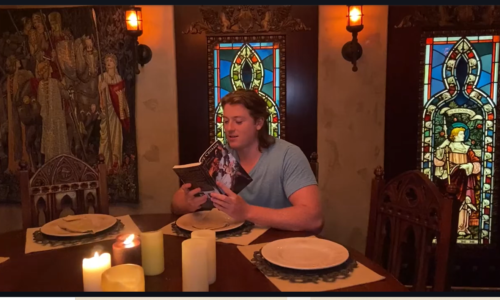How to Publish a Book
- Dawn Crusade
- agent, author, books, novels, publish, self-publish
- 0 Comments
Ever since I published my book, people always ask me, “How exactly did you do that?” Publishing a written work has never been easier, but all the noise and information accessible online can be overwhelming. Today I’m going to use my personal experiences to guide you through the process of publishing!

To Publish or Self-Publish
There are serious pros and cons for traditional publication and self-publication. Let’s start with old school publishing.
So, why should you publish through a traditional publishing house? Publishing in this fashion places your work in physical stores, has your marketing handled by a publicist, and most importantly, gives your book professional credibility. Pursuing this route, however, comes with a list of cons. You have less creative control over your work, the marketing is out of your control, you earn a smaller cut of sales, and the process of traditional publication can take months or even years. In my opinion, if you aren’t interested in marketing, want professional respect, have a low budget, and are in no rush to publish, this is the route for you.
Now you might be thinking, “But finding a literary agent has been impossible, most book sales happen online, respect for self-publishing has grown exponentially, and I want to publish my book today!” You’d be right for thinking that! Self-publishing through respected distributors has changed how professionals and consumers view self-published works. Going this route means full creative control over your work and marketing, a larger cut of sales, and instant publication when you’re ready. The downside is that old-school professionals may look down on your work, getting into physical stores is left up to you, and editor fees are yours to pay. If you love social media and have a good following, care more about reader’s opinions than industry professionals, and want to begin your literary career as soon as possible, then this is the route for you.
How to Traditionally Publish
First, completely revise and edit your manuscript! Paying a professional editor is not a mistake in this step (although it isn’t totally necessary). If you are a new author, it is immensely important to put your best foot forward and submit a read-to-publish piece.
Next, you need to find a literary agent. Google is your best friend in this process. There are hundreds of databases housing literary agent information. Before you begin searching online, pull out some of your favorite books that are similar to yours and find information about the author’s agent. If it isn’t shown in the book, it is easily locatable online with a quick search.
Once you find an agent, you must submit a query letter to be considered for representation. I could do a whole separate post about writing the perfect query letter. There are countless examples online for reference as well. To quickly simplify what agents look for, you should include a personalized greeting, your own background, hook the reader with a short synopsis, give your genre and target audience, and state why this particular agent is perfect for you. Additionally, you will need to attach part of your manuscript or the entire manuscript to the submission.
The next step is to submit query letters to as many other suitable agents as you can find. Then…wait! Once an agent expresses interest, carefully consider their offer. Legitimate agents will never ask for money from you. They are paid when they sell your book to a publisher. After you accept an offer with an agent, they will begin discussions with publishing houses to get your book distributed. This can take months as well, but you’re no longer alone or solely responsible for your book’s success. Your solo work is done!
How to Self-Publish
The first step here is the same for traditional publishing, but it is no longer optional. You MUST pay a professional editor to revise your work. Traditionally published books sometimes go through ten rounds of editing before they hit the shelves. There are three types of editing: developmental editing, line editing, and copy editing. Development editing is broad-stroke assistance with world building, story, characters, themes, and language. Line editing is more narrowly focused on structure, plot, character progression, and grammar. Finally, copyediting is to address any and all grammatical mistakes, typos, syntax, and clarity. Understand the progression?
My recommendation is to undergo at least one round of line editing. It is more expensive than copy editing, but you will get your first professional opinion on your novel’s story. Most line editors will make copy edits, however they will not address small mistakes. This was an issue I encountered with online editing services. These types of services offer professional grade editing, yet they encourage the customer to pay for multiple rounds to reach perfection. There are many online businesses available for editors, but I cannot personally recommend any based on my experiences.
If you can, I recommend finding an individual editor you connect with. I found my editor (MJ Schwader) through a personal recommendation and formed a professional relationship with him. Since I already had my novel line edited, I paid him to copy edit my work and format it for publication. There may be a specific editor you find listed with an online editing service. Personally request them and ask for video/phone meetings before and after their edits. It is important to develop a dialogue around your work. Talk about the state of your novel and how many rounds of editing you both feel it needs.
Okay, your book is totally edited. Now what? Many editors also offer formatting assistance for print and eBooks. You also need a book cover and cover copy at the very least (the engaging rundown on the back of books). I found my artist on Fiverr and she designed a breathtaking cover for me. Again, form professional relationships during this step.
Amazon offers tips on their requirements for Kindle Direct Publishing. Going this route means your eBook can only be listed with Kindle. This isn’t necessarily a bad thing, but it is worth knowing. I use a distributor called IngraamSpark for my publishing. They offer global print on demand publishing. By using their service, I was able to get my novel listed everywhere I could hope for. Amazon, Barnes and Noble, Target, Warlmart, Apple Books, you name it!
Whatever service you use for self-publishing will list the file requirements for print and eBooks. You will also have to purchase a barcode and ISBN for your book to be listed for sale.
That’s all the steps needed for your self-published debut! There are small steps I purposely left out such as navigating file requirements and where to get a barcode and an ISBN. This is because it is a conversation your editor should be willing to have with you. If you’d like me to go in depth on all the gritty details, let me know. For now, I’m signing off…
Related Posts

- Dawn Crusade
- December 1, 2021
Ike Ryder
Ike Ryder is on the cusp of manhood and being called to join his father’s decade-long war, a ..

- Dawn Crusade
- September 15, 2021
Live Read – Dawn Crusade by E. Reed
I sat down and read the prologue of Dawn Crusade: A Tale from Somerset! ..
